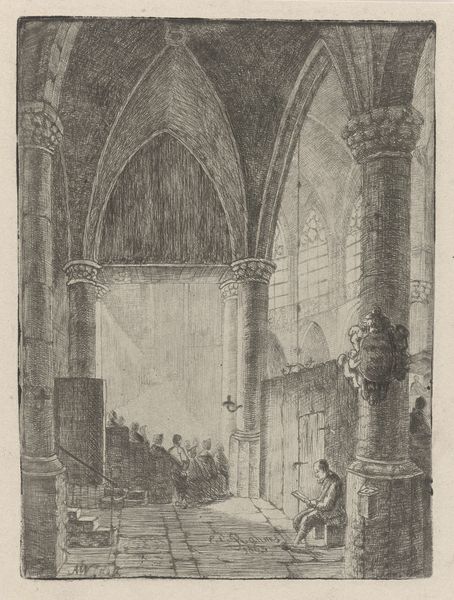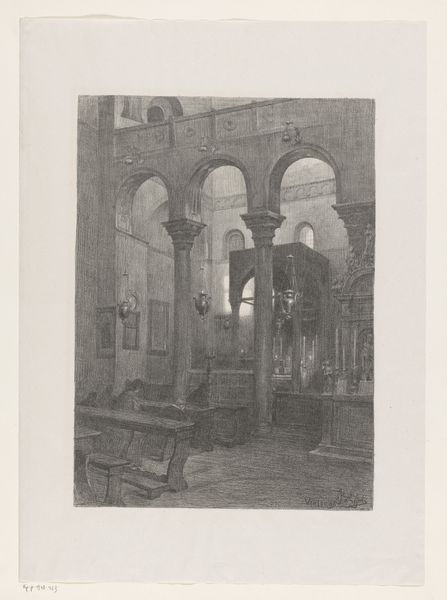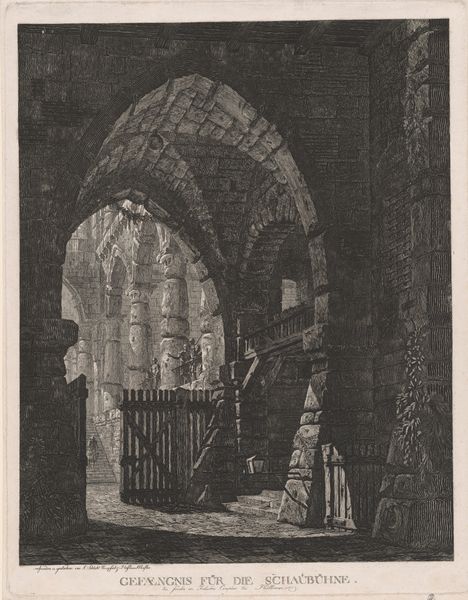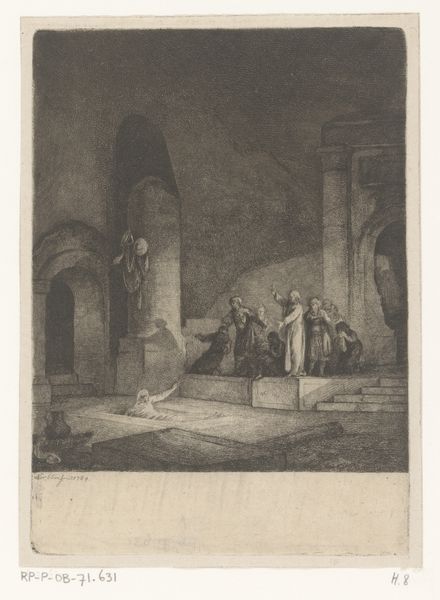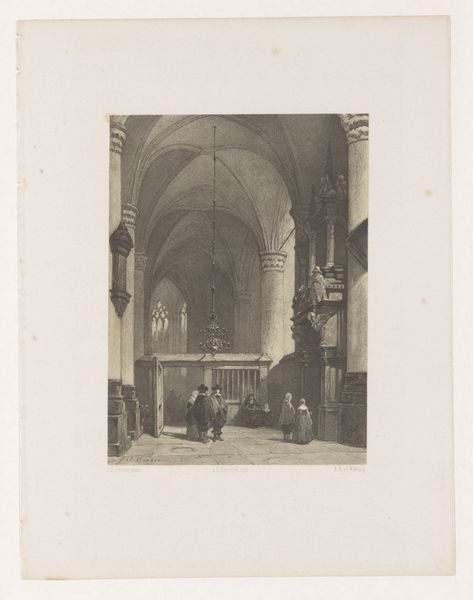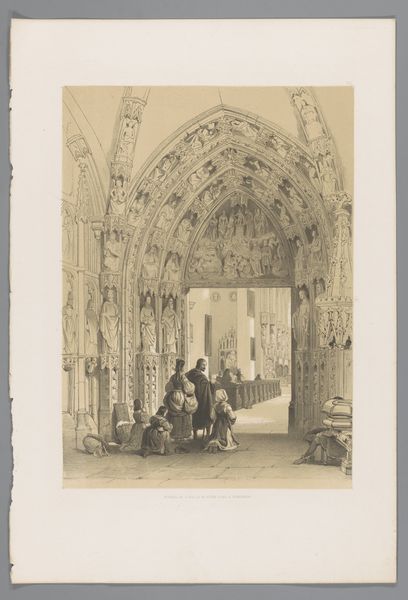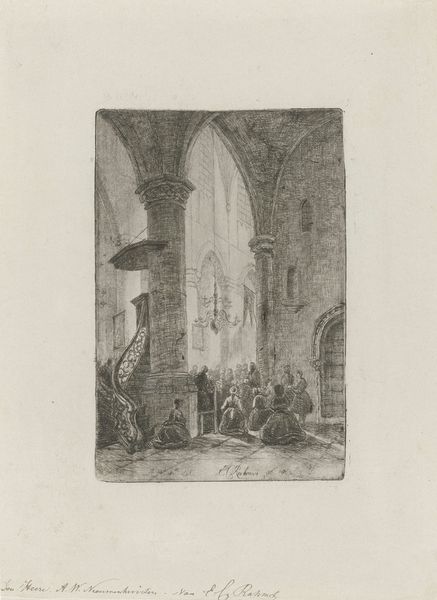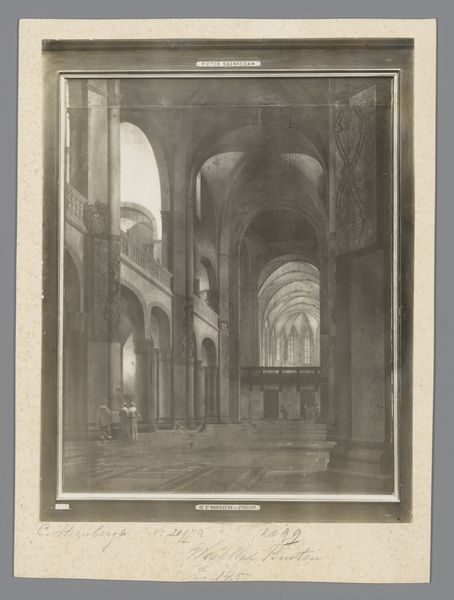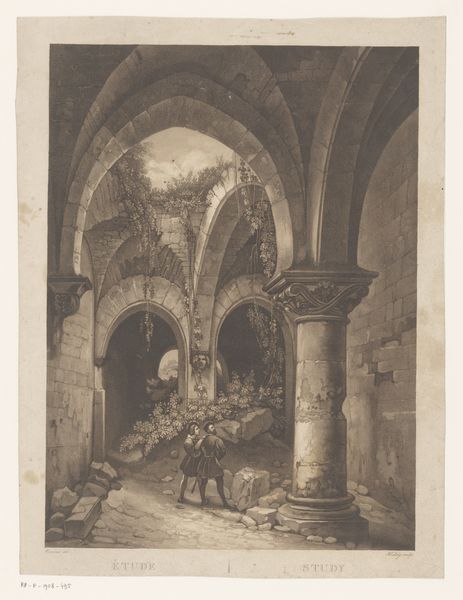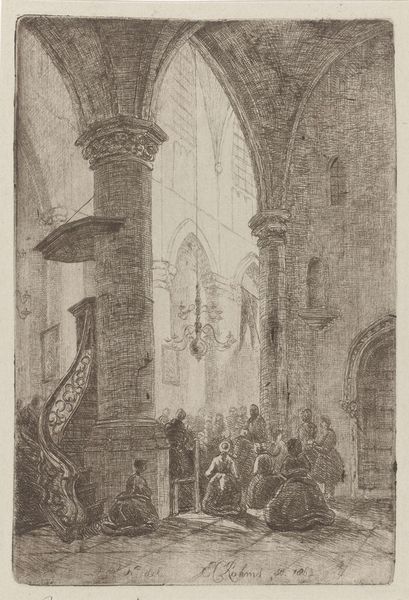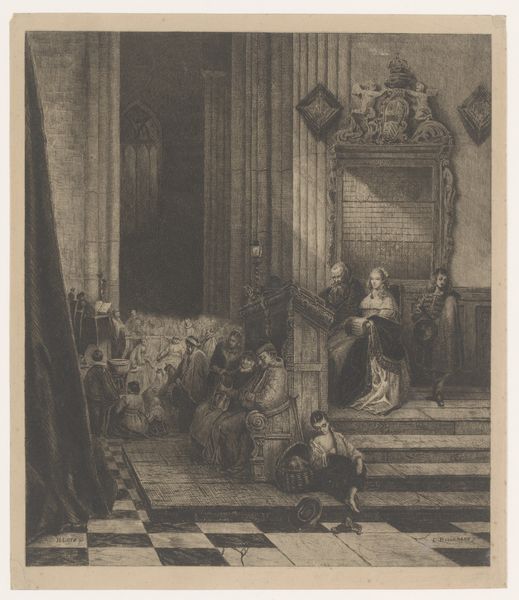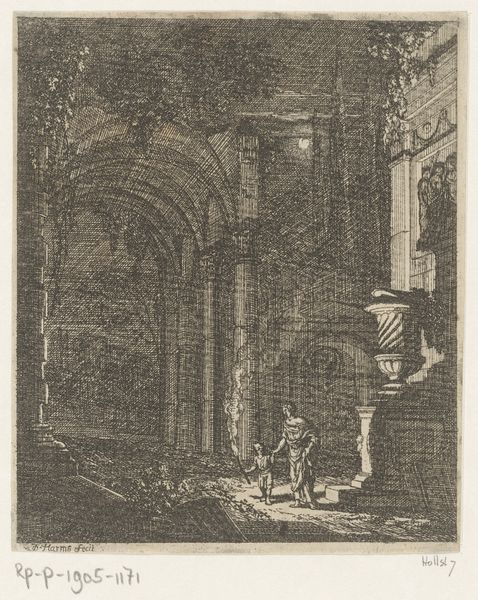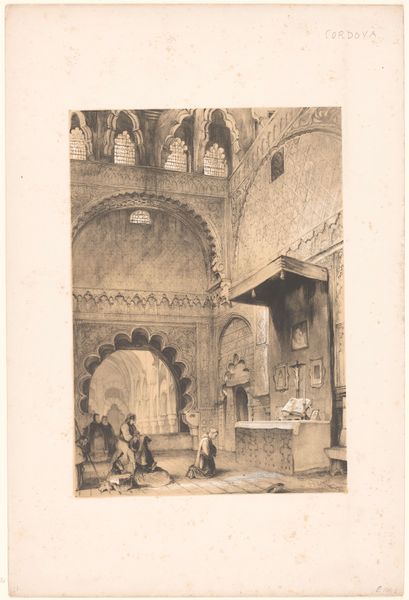
drawing, print
#
drawing
#
pale palette
#
muted colour palette
# print
#
genre-painting
#
history-painting
#
monochrome
Dimensions: Sheet: 21 7/8 × 15 13/16 in. (55.5 × 40.2 cm) Image: 17 × 12 11/16 in. (43.2 × 32.2 cm)
Copyright: Public Domain
Editor: Friedrich Hohe's "Stella in Prison," from 1810. It’s a drawing, or maybe a print? It's dominated by muted monochrome tones and a rather bleak scene. What’s immediately striking is how the architecture almost dwarfs the figures. How do you interpret this work in light of its historical context? Curator: The bleakness you note is central to its meaning. Think about early 19th-century Germany. This work appears during the Napoleonic occupation. Prison scenes were not uncommon, often romanticizing or critiquing social structures. Note the dramatic staging, almost theatrical, in its depiction of incarceration, and the attempt to create awareness of current realities. How do you think this plays into the socio-political landscape of the time? Editor: It seems less romanticized and more about the crushing reality of the prison, a direct result of political unrest. Is it then, a commentary on justice or the lack thereof? Curator: Precisely. It critiques power structures through the visual language accessible to the public. Look at how Hohe uses light and shadow. The oppressive architecture emphasizes the helplessness of the prisoners. This type of image circulates as prints, therefore, reaching a wider audience beyond traditional art circles, impacting public sentiment. Do you think this distribution method shapes its impact? Editor: Definitely. Prints democratize art. A piece like this could fuel conversations, spreading awareness about the political situation. It almost becomes a form of propaganda, in a way. Curator: It occupies that interesting space. Consider also that images of incarceration were consumed differently by different social strata. Editor: I never thought about art so directly commenting on real-world political scenarios, beyond just landscapes or portraits. It's fascinating to consider how art acted as a form of social commentary. Curator: Exactly, and how the very act of creating and distributing these images had its own political charge. These artworks serve as valuable documents, reflecting on and actively shaping public discourse.
Comments
No comments
Be the first to comment and join the conversation on the ultimate creative platform.

